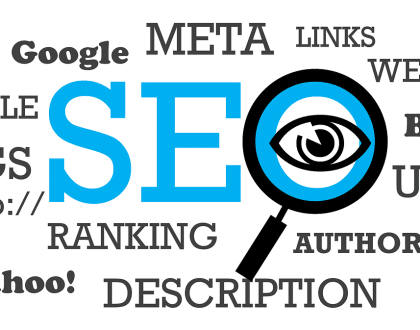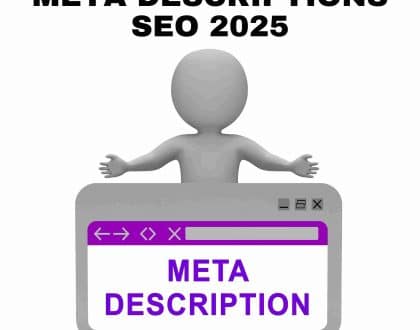SEO, SEM, and E-commerce: Strategies for Success

In the competitive world of e-commerce, standing out requires more than just a great product or service. It demands a strategic approach to digital visibility. This is where Search Engine Optimization (SEO) and Search Engine Marketing (SEM) come into play. Together, they form a powerful combination that drives traffic, enhances brand visibility, and ultimately boosts sales. In this blog, we delve deep into how SEO and SEM impact e-commerce, their individual and combined strengths, and actionable strategies to achieve success.
SEO, SEM, and E-commerce: Strategies for Success in the Digital Marketplace
What is SEO?
Search Engine Optimization (SEO) refers to the process of optimizing a website to improve its visibility in organic search engine results. It encompasses several techniques designed to enhance a site s relevance and authority, ensuring it ranks higher for specific keywords or search queries.
Key Components of SEO:
On-Page SEO:
- Optimizing product titles, descriptions, meta tags, and headings.
- Using relevant keywords naturally within the content.
- Enhancing the user experience with fast-loading pages and mobile-friendly designs.
Off-Page SEO:
- Building backlinks from reputable websites.
- Engaging in social media marketing to drive traffic and improve domain authority.
Technical SEO:
- Improving website architecture and crawlability.
- Implementing schema markup for better search engine understanding.
- Ensuring secure and encrypted connections (HTTPS).
Importance of SEO in E-commerce:
For e-commerce websites, SEO ensures that potential customers find your products when they search for related items. Well-optimized product pages can:
- Increase organic traffic.
- Enhance user trust and brand credibility.
- Reduce dependency on paid advertising.
What is SEM?
Search Engine Marketing (SEM) involves leveraging paid advertising to increase visibility on search engines. Unlike SEO, which focuses on organic traffic, SEM delivers immediate results through strategies like Pay-Per-Click (PPC) campaigns.
Key Components of SEM:
Google Ads:
- Running text ads on the search network for specific keywords.
- Displaying visual ads on relevant websites within Google s Display Network.
Shopping Ads:
- Highlighting specific products with images, prices, and direct links to the product page.
Remarketing Campaigns:
- Targeting users who have previously interacted with your site but haven t made a purchase.
Bing Ads:
- A less competitive and often cost-effective alternative to Google Ads.
Importance of SEM in E-commerce:
SEM allows businesses to:
- Drive targeted traffic quickly.
- Gain visibility for competitive keywords.
- Test new markets and strategies with measurable results.
SEO vs. SEM: Understanding the Differences
While SEO and SEM share the goal of driving traffic to your website, their approaches differ significantly:
 When to Use SEO:
When to Use SEO:
- For long-term growth.
- To build a sustainable flow of organic traffic.
- To improve overall website authority.
When to Use SEM:
- To gain instant visibility during product launches.
- For time-sensitive promotions and events.
- To target highly competitive keywords.
- The Role of SEO in E-commerce
SEO is a cornerstone for any successful e-commerce business. Here s how it benefits online retailers:
1. Optimizing Product Pages:
- Use descriptive and keyword-rich product titles and meta descriptions.
- Include high-quality images with alt text optimized for search engines.
- Write detailed product descriptions that address user queries.
2. Improving Site Architecture:
- Ensure a logical structure with clear categories and subcategories.
- Use breadcrumb navigation to improve user experience and indexing.
3. Leveraging Content Marketing:
- Create blog posts and guides that answer customer questions.
- Incorporate internal links to drive traffic to product pages.
4. Mobile Optimization:
- With mobile commerce on the rise, ensure your website is responsive and fast-loading on all devices.
The Role of SEM in E-commerce
SEM is equally important for driving traffic and conversions, especially for new businesses or products:
1. Launching Products with PPC Campaigns:
- Highlight new arrivals with targeted ads.
- Use dynamic ads to automatically display relevant products to potential customers.
2. Maximizing Seasonal Sales:
- Run campaigns for Black Friday, Cyber Monday, or holiday sales.
- Use countdown timers in ads to create urgency.
3. Targeting Niche Audiences:
- Use demographic and location targeting to reach specific customer groups.
- Experiment with long-tail keywords for lower-cost conversions.
4. Remarketing for Increased Conversions:
- Re-engage users who abandoned their carts.
- Offer discounts or promotions to entice them back.
Combining SEO and SEM for Maximum Impact
While SEO and SEM can work independently, their true power lies in integration. Here s how to combine them effectively:
1. Data Sharing:
- Use insights from SEM campaigns (like high-performing keywords) to inform your SEO strategy.
2. Comprehensive Keyword Strategy:
- Target high-volume keywords with SEO and competitive, high-cost keywords with SEM.
3. A/B Testing:
- Test ad copy and landing page designs with SEM to optimize pages for SEO.
4. Building Brand Trust:
- Use SEM for immediate visibility and SEO to maintain long-term trust and authority.
Advanced Strategies in SEO and SEM for E-commerce
SEO:
- Voice Search Optimization:
- Optimize for conversational queries and long-tail keywords.
Schema Markup:
- Use structured data to enhance search result appearances with rich snippets.
Mobile-First Indexing:
- Focus on mobile performance as search engines prioritize mobile experiences.
SEM:
Google Shopping Ads:
- Showcase products directly on SERPs with visually appealing shopping ads.
Dynamic Remarketing:
- Automatically display ads tailored to users previous interactions with your site.
A/B Testing:
- Continuously test different ad elements to improve performance and ROI.
- Measuring Success in SEO and SEM
Key Performance Indicators (KPIs):
- SEO: Organic traffic, keyword rankings, bounce rate, and conversion rate.
- SEM: Click-through rate (CTR), cost-per-click (CPC), return on ad spend (ROAS), and quality score.
Tools for Monitoring:
- SEO: Google Analytics, Ahrefs, SEMrush.
- SEM: Google Ads Manager, Microsoft Advertising.
Analyzing Results:
- Regularly review performance metrics to refine your strategies.
- Use customer behavior insights to improve both SEO and SEM efforts.
Future Trends in SEO, SEM, and E-commerce
1. AI and Machine Learning:
- Predictive analytics for better targeting and personalization.
- Automated bidding strategies in SEM.
2. Voice and Visual Search:
- Adapting to the growing use of smart assistants and image-based search tools.
3. Sustainable Practices:
- Highlighting eco-friendly products and practices in both SEO and SEM campaigns.
Conclusion
The synergy between SEO and SEM is crucial for e-commerce success. While SEO builds a solid foundation for organic growth, SEM delivers immediate results. By leveraging both strategies, businesses can achieve sustainable visibility, attract a broader audience, and maximize conversions. In the ever-evolving digital landscape, staying ahead requires continuous learning, adaptation, and a commitment to delivering value to customers. Whether you re a budding entrepreneur or an established retailer, the integration of SEO and SEM is your key to thriving in the competitive e-commerce market.
Recommended Posts

Local SEO vs. Global SEO: A Comprehensive Guide
May 14, 2025



